TA draft review (1-15 pick): Harrison did not mess with Bailey s plan to go to the Wizards failed
The two-day 2025 NBA Draft is in progress. After the first round draft, Sam Vecenie, draft experts from The Athletic, and John Hollinger, analyzed the adaptability of all the selected rookies and home teams. 1, Dallas Mavericks Cooper Flag (2-meter 03 wing, 18 years old, Duke University) Pre-election prediction: No. 1 Sam Vecenie: Flag is the highest-performing rookie I have seen in the years of working in draft evaluation. Since the 2015 draft, Flag's talent is second only to Vinban Yama. Although I think Zion's theoretical upper limit may be higher, Flag's comprehensiveness on both ends of offense and defense, as well as the perfect combination of technology and ball quotient, will be more conducive to his role in high-intensity games. Compared to Zion, there are two key factors that are more optimistic about Flag: First, Flag has zero limits on the team's lineup. His comprehensive technical characteristics and top competitive mentality can immediately improve his teammates' performance. Zion needs the team to set up a special lineup, especially looking for rare space-type No. 5 players. Secondly, Zion has had hidden dangers of injury since high school, while Flag has no problem at all. Even compared with Zion on the 2019 draft night, Flag's safety factor is far beyond the former. I think Flag will be selected into the best team in the future, and his ceiling is expected to become a top five player in the league. His all-round influence on the game on both offense and defense is amazing. If you want to build a champion, this kind of player with an outstanding mind and competitive mentality is the ideal core cornerstone, and he will immediately become the mainstay of the team. John Hollinger: Mavericks fans can finally breathe a sigh of relief. Nick Harrison did not trade the No. 1 pick or choose another person. To be fair, this choice does not require any consideration. Flag's most conservative expectations are to be an All-Star at the end of his rookie contract, and his cap is even at the MVP level. For the Mavericks, the bigger question is whether the veterans in the team should be cleaned up and completely rebuild around Flag. 2, San Antonio Spurs Dylan Harper (1.94 guard, 19 years old, Rutgers University) Pre-election forecast: No. Sam Vecenie: Dylan Harper has excellent conditions to become a top NBA defender, and he meets almost all the requirements for this position. Despite playing in an old-school offensive system that lacks space, he still showed an elite-level basket impact at Rutgers. He frequently creates fouls and shows a passing vision that is sufficient to serve as the main controller. On the defensive end, he is full of fighting spirit and has obvious body advantages, and can undertake important defensive tasks at critical moments. The only thing that needs to be improved is his emergency stop jump shot technique, which is crucial to the NBA main defender. Harper failed to enter my first-tier rookie with a slight gap, but he firmly ranked at the top of the second-tier. If the development goes well, he is expected to be an All-Star or even a top-ranked team. Even with limited improvements in the coming years, his lower limit remains extremely high with his creativity in holding the ball, shooting ability and defensive size. John Hollinger: Choosing Harper made the Spurs a little crowded backcourt, with new best rookie Castle and the newly-joined former All-Star Fox on the team. This may force the Spurs to consider a trade later, and the primary goal of the draft is to acquire talent, and Harper is obviously the most talented rookie except Flag. 3, Philadelphia 76ers VJ-Edgecomb (1.93 guard, 19 years old, Baylor University) Pre-election forecast: 4th pick Sam Vecenie: Edgecomb is one of the safest choices in this draft. He showed his top athletic ability with extremely strong functional capabilities on the court, and his defensive end was even more amazing. His ubiquitous defensive pressure could make his opponent miserable. Offensively, he is good at catching shots and begins to show his ability to hit three-pointers on the move. The off-ball cut-in consciousness is excellent, as we have witnessed in various game situations. The team-first style of play indicates that he will become a lifelong value-added player and continue to contribute to the winning team. Edgecomb's upper limit ultimately depends on how well he is able to hold the ball. Do you believe his professional attitude is enough to turn athletic talent into an NBA-level offensive threat? At present, he still has shortcomings in ball-holding skills and emergency stop jump shots, and the pick-and-roll handling is not delicate enough. I compared it to "Gary Harris with Jets" throughout the season, considering that the original Harris (without such athletic ability) averaged 15 points, 3 rebounds and 3 assists per game for three consecutive years (47%/39%/80% from three events), and two of which won the best defensive lineup votes, this ceiling template is about the top 40 players in the league. While my assessment of Edgecom's ceiling may be slightly below consensus, the relatively secure top 40 player expectations in the league still keep him firmly in the top five of this rookie. John Hollinger: It was not surprising to me that the 76ers finally left for their own use after selling draft picks. This is in line with the usual style of the team's management. They always have to find out the value of the assets in their hands first. Edgecomm ranked third in my prediction list, which just happened to make up for the fatal flaw of the overall lack of athletic ability for the 76ers lineup. 4, Charlotte Hornets Kon-Kenipel (2m 01 flank, 19 years old, Duke University) Pre-election prediction: Tanhua Sam Vecenie: It is not reasonable to simply define Kneipel as a shooter. His comprehensive technical characteristics make him an attractive potential stock. Players with standard sizes that both dribble, pass, shoot, make decisions and defense are rare in the NBA, and Kniper happens to have these qualities at the same time. This leads me to believe that he will become a player who can change the team's victory or defeat: he will likely grow into an elite shooter who can attack from various angles, which will become the foundation of his early career. As the defender strengthens his defense, he can use this to develop more offensive means. We have witnessed Kniper's outstanding decision-making skills, passing skills and confidence in keeping the ball. The only thing worth worrying about is the defensive end, the slow lateral movement speed may expose shortcomings in the highest level of the game, and the impact on regular season games is limited. Although there is a risk of being misleading (ultimately becoming an ordinary rotation player), I think he is more likely to be a starting wing that can bring a lot of wins. In the context of the continuous escalation of the modern NBA, especially in the confrontation between the game, this kind of player who can improve the team's combat power is the puzzle that needs most at critical moments. John Hollinger: There were rumors that the Hornets might trade this sign down, but the management obviously lacked confidence in the goal of still being able to choose the center instrument after the transaction. Kniper perfectly meets the Hornets' needs, and this scoring wing will improve the team's lack of shooting. It is worth mentioning that this coincides with my pre-draft prediction: Kniper ranked fourth on my list and is the best choice among the remaining players at the moment. 5, Utah Jazz Ece Bailey (2-02 wing, 18 years old, Rutgers University) Pre-election forecast: 6th pick Sam Vecenie: If the shortcomings can be improved, Ece Bailey is expected to become the second best player of this year. He especially needs to improve his body's flexibility and athletic ability in a bent posture, while enhancing his strength, which will help him mobilize his whole body more efficiently and make his talent more fully utilized on both offense and defense. After achieving these, he can focus on improving the ball-collection movements during breakthroughs and improving the finishing efficiency, which will also make it more difficult for defenders to predict their offensive choices. What will be improved will be its shooting percentage (the shooting percentage of emergency stop jump shots this year is indeed low), and the defensive end can better affect the game. If you can maintain defensive focus (he has shown relevant potential), the All-Star level ceiling is not a false statement. Those who deny this possibility are totally wrong, and he does have the potential to evolve into a star wing that creates offensive opportunities. But all this is like building a house of cards: improvement in flexibility will drive progress in certain technical links, and then we need to continue to improve our shooting skills, and at the same time we make diligent breakthroughs in the decision-making ability of the ball, not to mention maintaining a stable defensive focus. So many variables make me worry about choosing such players with the top five picks. The good news is that Es Bailey has a guaranteed lower limit: at the age of 18, he is already a catch pitcher with standard body, wingspan and athletic ability, and has also performed brilliantly on the defensive end. Even if it fails to realize its full potential, these traits are enough to support its long-term NBA presence. Es Bailey is a potential stock that needs long-term cultivation. It is worth investing but needs to be patient to wait for the fruit to mature. I hope he can get a suitable growth environment. John Hollinger: The first unexpected candidate! Under the new management at the helm of Austin Angie, no one could have expected the Jazz to choose with the No. 5 pick, and they took Es Bailey before the two most interested teams (Wizards and Pelicans). I personally have little enthusiasm for Bailey (more pessimistic than most people), and another highlight is how he will integrate into the Jazz frontcourt lineup with Markkanen, John Collins and Kessler. 6. Washington Wizards Trey Johnson (1.95 defender, 19 years old, University of Texas) Pre-election prediction: 5th pick Sam Vecenie: I appreciate Trey Johnson's technical characteristics and game temperament. His way of improving his skills is respectable and will continue to improve as he accumulates experience. There are two key points to determine its upper limit: First, the strength must be strengthened in order to more effectively fight the defender when breaking through (he is not afraid of physical contact). The good news is that the 19-year-old trains hard and it is only a matter of time before he can gain muscle. The second is the team positioning. Ideally, he should first focus on becoming a high-level space player and off-ball shooter, use defense and defense to find offensive opportunities, rather than taking on too many ball-holding tasks too early. This gradual development path will help him gain stable playing time in the early stage of his career, and gradually develop his ball-holding offensive ability after he grows older and his strength increases. Trey Johnson's mid-lower template reminds me of an upgraded version of Malik Beasley (this is by no means derogatory). Malik Beasley averaged 14 points per game, shot 39% from three-pointers and produced considerable production, and his career income will be close to nine-digits. In today's NBA, shooters like Trae Johnson usually develop better than that. If he can become a more reliable and more stable defensive version of Malik Beasley, he will definitely lock in the starting position. These goals are practical, and of course there is also the possibility of developing a scorer who averages more than 25 points per game at the All-Star level. John Hollinger: There are rumors that Es Bailey's refusal to try out was to ensure that the Wizards could be landed, and it seems that the plan has failed. Although I'm not as optimistic as other analysts, the Wizards do need to fully improve their talent, and his publicly predicted list in multiple media outlets is the best choice among the remaining players. The Wizards' shooting guard positions are now slightly crowded (McCollum, Smart and Carrington), and it is likely to be resolved through a trade before the mid-season. 7, New Orleans Pelicans Jeremiah Fells (1.91 guard, 18 years old, University of Oklahoma) Pre-election forecast: 18th pick Sam Vecenie: My evaluation of Fells may be lower than all public analysis, but the NBA decision-makers have far more disagreements about him than rumors outside. For such a small, purely ball-holder player (I think he is exactly that), you either believe that he has the potential to be an All-Star master or you believe that he can only be a substitute scorer, which will greatly weaken his value.. I'm optimistic that he will become the starting center at the league average and is worth choosing with the lottery final draw, unlike some who think it's a high-risk and high-reward bet. John Hollinger: Although the selection is executed by the Rockets, the draft pick will be sent to the Suns after the Durant trade officially takes effect on July 6. The Suns, who have long-term rumors that they need to strengthen the frontcourt, have obtained a growth player, but they are currently winning in the current system. If MaluAcchi cannot enter the rotation immediately, this choice may be a bit embarrassing (maybe Thomas Sauber from Georgetown University will be a safer choice. But then again, if MaluAcchi cannot compete with Richards and Igudaro, he will not deserve to be the No. 10 pick. 11, Memphis Grizzlies (from the Trail Blazers) Sidrick Coward (1.96 ft, 21, Washington State University) Pre-election prediction: 9th pick Sam Vecenie: I acknowledge the hype about Coward, and he ranked him in the top 35 pick at the beginning of the season. He was expected to lock in the first round before the shoulder injury. He has everything he has to be a quality NBA starter: amazing wingspan, beautiful 3-point shooting, reliable defensive resume and defensive intention, excellent off-ball movement and basketball IQ, and a top physique that has evolved year by year. Although I worry that his ball-holding skills may not be fully developed and the lack of resume against elite opponents kept me restrained, there is absolutely reason to believe that he can become an influential player, and this lottery pick reflects this. John Hollinger: Grizzlies CEO Zach Kleiman once again traded upward to lock in the target (this draw was selected by the Trail Blazers but sent to the Grizzlies), and the Grizzlies are worried that Koward will not fall to the 16th pick. After sending off Bain, the Grizzlies are eager to seek talent for both specific and technical wings. Although Koward only played 6 games this season, the team still hopes that he can plug and play. The Grizzlies paid a high price for a future first-round pick + two second-round picks to improve five picks. 12, Chicago Bulls Noah Essanger (2-meter 06 inside, 18 years old, Ulm, Bundesliga) Pre-election prediction: 16th pick Sam Vecenie: Esanger is a potential stock that is extremely difficult to evaluate. On the one hand, he has outstanding performance in overseas professional leagues and his athletic talent contains value; on the other hand, the German league level is limited (below the French and Adriatic League), and his technical shortcomings may be exposed in the NBA. Esanger struggles to shoot, rarely has outstanding pass performance this season, and the ball needs to be more solid. Although there are amazing moments on the defensive end, the stability is insufficient between defensive rounds, and there are often loss of defense with or without the ball. Esanger is a long-term training program, and the willingness of each team to train will be very different. Some teams will be obsessed with their athletic talent and believe that he can make him a striker with a huge offensive and defensive coverage; others are uninterested because their actual growth lags behind data performance. John Hollinger: The quality forward once again went to Chicago at the end of the Lotto, last year was Boozelis, and this year it was Esanger's turn. Despite the possible overlap between the two, Esanger is undoubtedly the best choice for the current pick. He needs to strengthen his physique and improve his three-pointer, and Bulls fans will notice his similarities with a Bulls old player, Esanger has a DeRozan-style foul-making ability. 13, New Orleans Pelicans (from the Hawks) Derek Quinn (2-06 inside, 20, University of Maryland) Pre-election forecast: 12th pick Sam Vecenie: Quinn unexpectedly triggered polarized evaluations from NBA teams. Some people regard him as a Shin-kyung-style support center, who will maintain a strong player who averages 20 points and 10 rebounds per game for a long time in the future. This expectation is not without reason: Quinn has shown amazing output at every stage of his career. With his outstanding balance and external skills, his innate game awareness and offensive skills should be transformed into the NBA. But doubts also exist, and he will face stricter requirements on the defensive end than in college, and his physical talent The limitations of this may limit its upper limit. Queen needs to continuously improve physical fitness and pace the most. If he cannot reach the star level, developing shooting can guarantee a high-quality rotation at the Naz Reed level. His development trajectory depends entirely on his own efforts: if he can maintain physical management this season, he is expected to grow into an All-Star player; but if he regresses in this aspect, it will be difficult to become a key factor in winning. However, even in the worst case, Quinn's superb skills are enough to serve as a substitute center. John Hollinger: Rumors spread this week that new Pelicans Vice President Joe Dumas relies heavily on draft recommendations from former Pistons, Thunder and Wizards executive Troy Weaver. This seems to be confirmed, Weaver was known for his preference for frontcourt players and Washington-area players during the Pistons. Given that both Quinn and Zion have defensive flaws and lack of shooting, this choice is worrying, not to mention the Pelicans' health management body The department is not an advantage. To select Quinn with 10 picks, the Pelicans also paid the expensive price of unprotected first round in 2026 (the higher pick among the Pelicans and the Bucks). 14, San Antonio Spurs Carter Bryant (1.99 wing, 19 years old, University of Arizona) Pre-election forecast: 10th pick Sam Vecenie: Carter Bryant has all the qualities of a top 3D player in the NBA: standard wing size, mature defensive skills, aggressive game temperament, and excellent sense of defense. He can intercept pass routes and protect the basket in time. His defense is extremely plastic, and he can lock down the defender at this stage. As his strength grows in his early 20s, he can even switch to the defense number four position. The key lies in offensive positioning. Although he is doubtful about his ability to hold the ball, three-point shooting will almost certainly become his weapon. Even if he eventually becomes a low-use player, as long as he maintains the outside threat and defense value, it will still be very strategic. The most similar template for Carter Bryant is Marvin Williams in 2005.. Don't underestimate this analogy. Marvin Williams' career has lasted for 15 years, starting more than 800 games, averaging 11 points and 5 rebounds in 2013 years, and a total income of over nine digits. This kind of career achievement is completely worthy of the lottery, which is why I ranked Carter Bryant in the 10th pick. John Hollinger: Carter Bryant has excellent adaptability as a 3D puzzle, and the Spurs are the perfect destination. The backcourt configuration has been set, and there is no need to worry about the center position. They are just needing Harrison-Barnesian-style and specific and projecting forwards to accompany the growth of young core. Carter Bryant just satisfies the demand and is the best choice among the remaining players on my list, and it is almost impossible for the Spurs to get a more ideal result. Subsequent links TA draft review (16-30 pick): Can't understand the Trail Blazers' pick Yang Hansen, Yaku's pick plummeted Original text: John HollingerSam Vecenie Compiled by: Li Taibai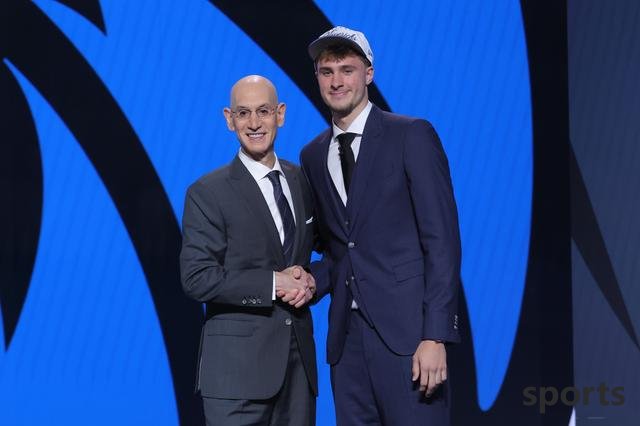
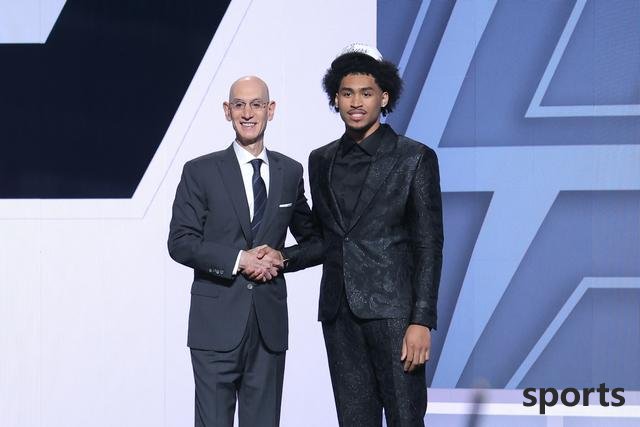
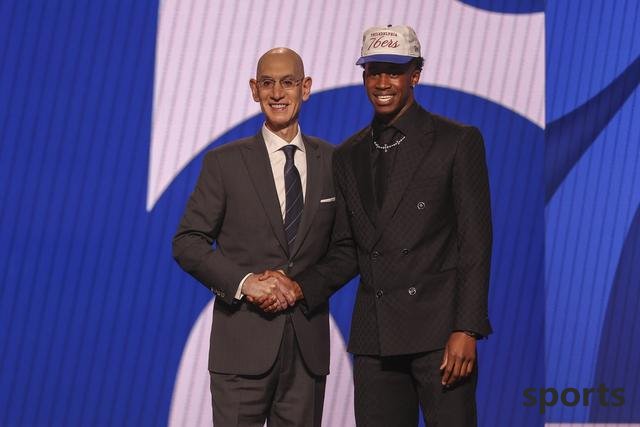
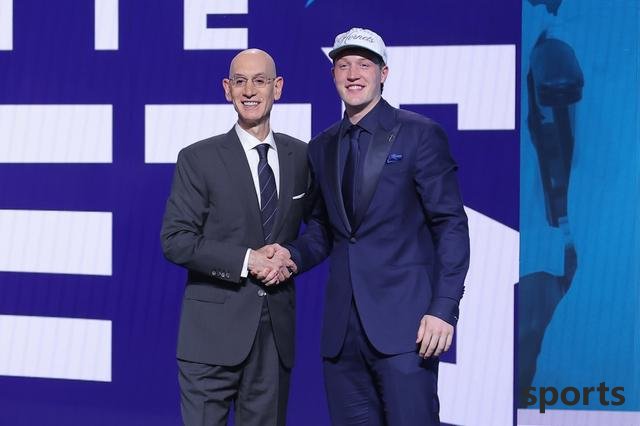
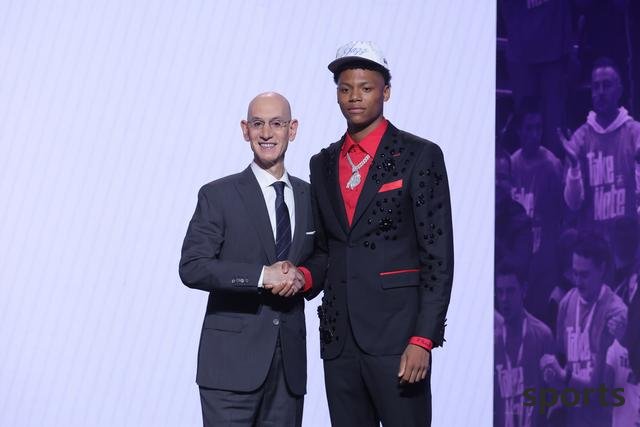
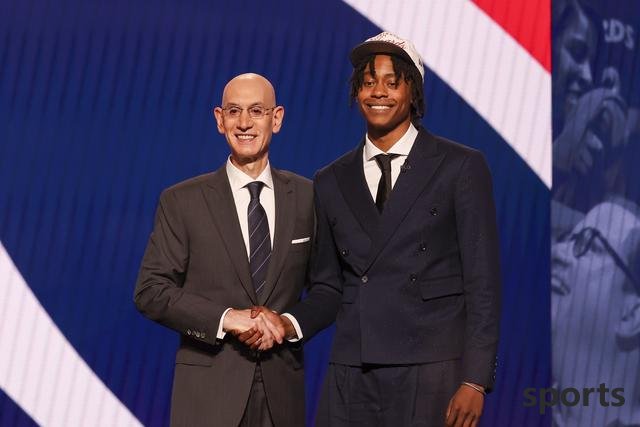
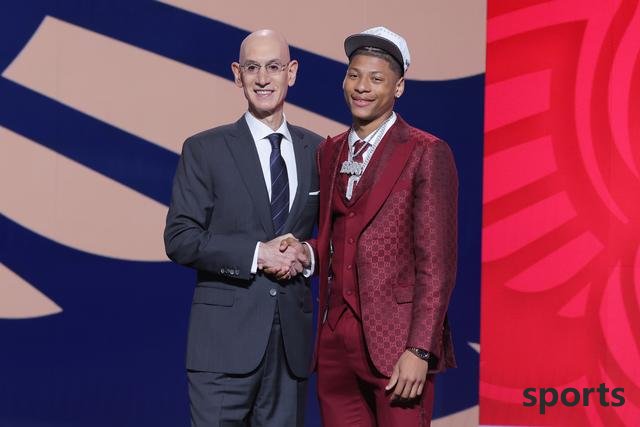
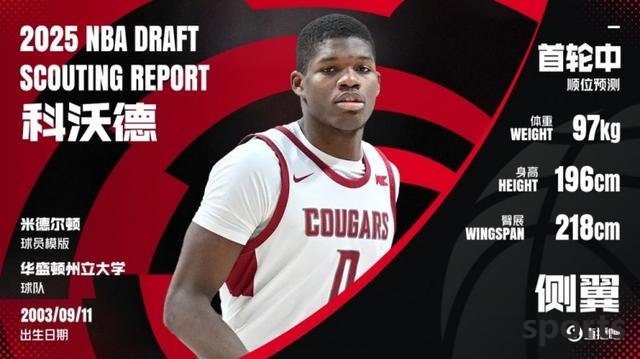
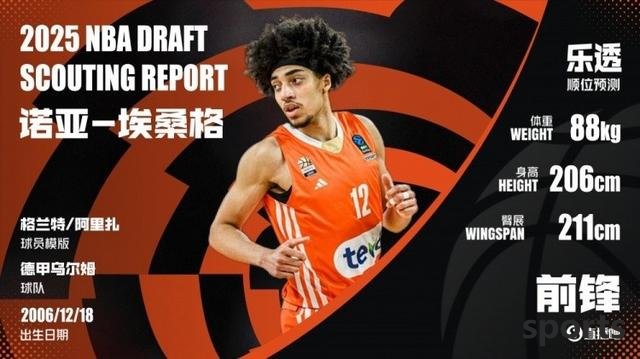
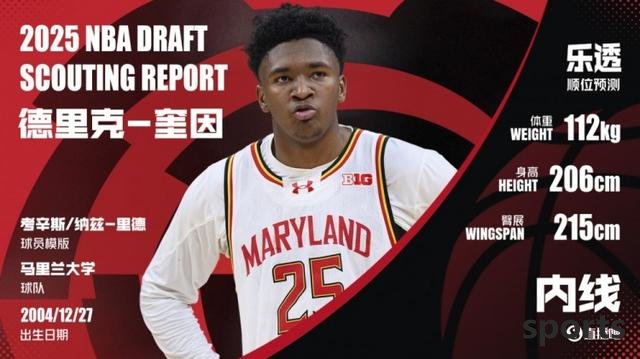
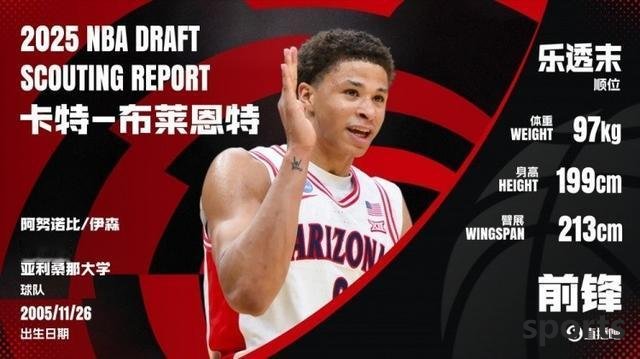
- Recent Posts
-
- Redick: Reeves ability to dra
- Hard Candy Returns? Towns thr
- NBA is difficult to win consec
- Taylor Hero s contract renewal
- Fox renews the contract is goo
- Ruthless man, Pierce walked ba
- NBA Best of the Day: SGA 55 po
- Westbrook, where is the next b
- Kings eliminated the Raptors 9
- Luca s weight loss returns to
- Hot Posts
-
- Lin Zhijie s current situation
- The Celtics are on sale! Zhu H
- Intercepting Boss Hu Cai, let
- Stockton: Malone is one of the
- Yu Jiahao joined La Liga and o
- Amen Thompson was selected for
- Cook: I witnessed James start
- Wuku Warriors are better than
- Change your fate against the w
- The Old Wolf King is in troubl
- Is it expected to enter the Ea
- The 20th major quarters are ou
- Lakers sign contract with the
- The embarrassing 1-1 in the fi
- He made key three-pointers in
- James is expected to form a te
- Doncic sings Redick: He is ver
- Clippers official praise "Welc
- He is clearly the sixth player
- Edwards made 64 free throws in
- search
-
- Links
-
